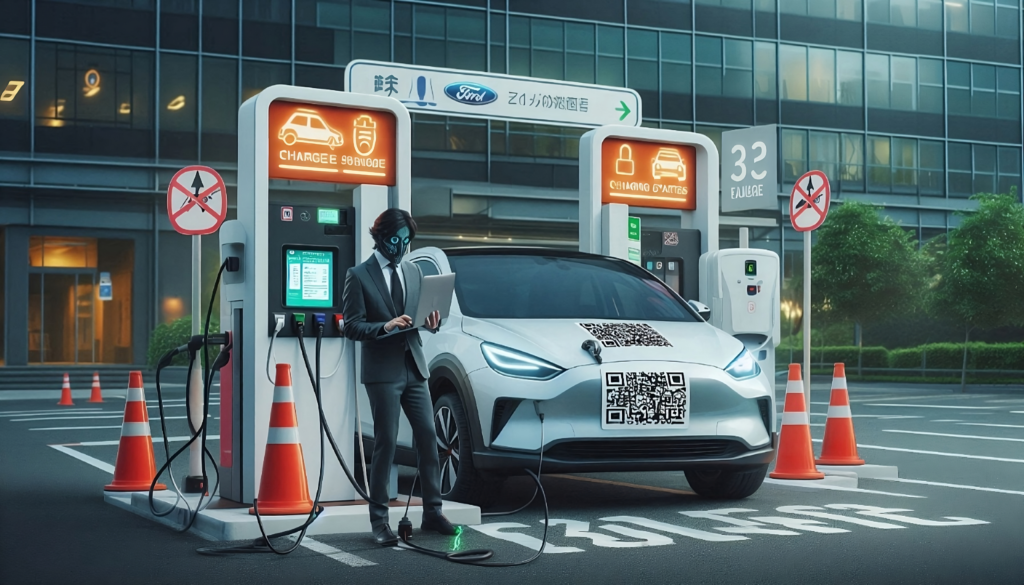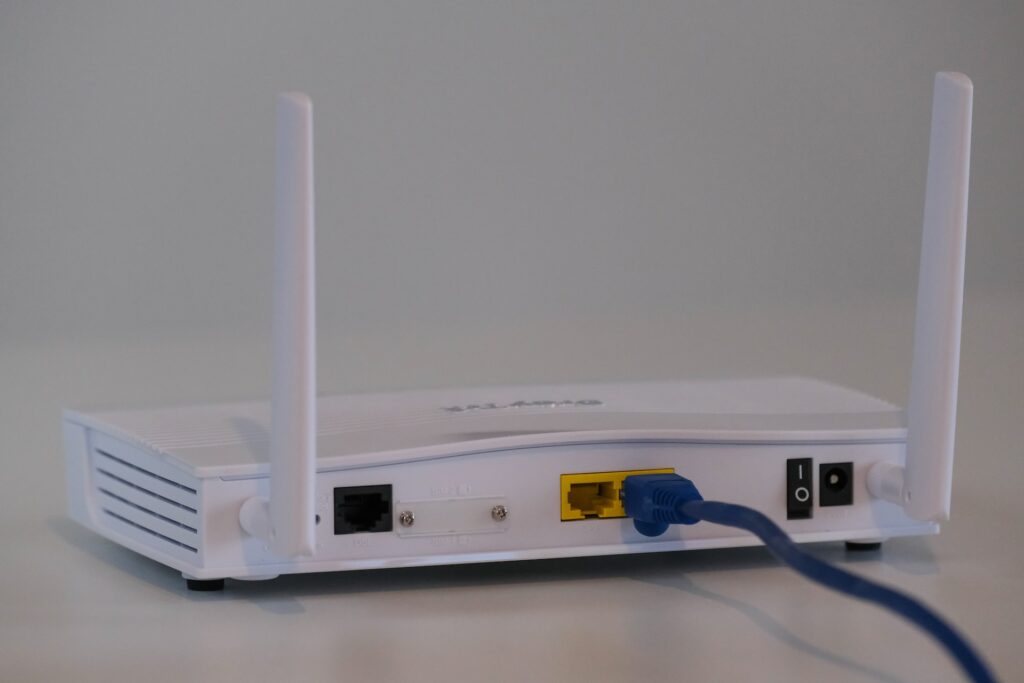
Electric vehicle (EV) owners need to be cautious as a new cyber threat known as the quishing attack EV is on the rise. This attack combines QR codes with phishing tactics, specifically targeting public EV charging stations. The quishing attack EV exploits the growing use of QR codes, tricking unsuspecting drivers into scanning fake codes. Once scanned, these fraudulent QR codes redirect users to malicious websites designed to steal sensitive information or install malware. As the popularity of electric vehicles grows, the quishing attack EV poses a significant risk to drivers who rely on public charging stations. Staying informed about this emerging threat is essential to ensure the safety of your personal data and devices.
What is a Quishing Attack?
A quishing attack EV is a new type of cyber threat targeting electric vehicle (EV) owners. It merges QR code manipulation with phishing tactics. The term “quishing” combines “QR code” and “phishing,” highlighting how scammers exploit QR codes to deceive users.
In a quishing attack EV, criminals place fraudulent QR code stickers over legitimate ones at public charging stations. When EV drivers scan these fake codes with their smartphones, they are redirected to malicious websites.
These websites often mimic real payment portals or apps used at charging stations. Unsuspecting users might enter sensitive information like credit card numbers or personal details, thinking they are making a legitimate transaction.
The aim of a quishing attack EV is to steal this sensitive data or to install malware on the user’s device. This malware can compromise personal files and grant hackers access to other accounts.
QR codes are commonly used for their convenience in making quick payments and sharing information. As EV adoption grows and charging infrastructure expands, the risk of a quishing attack EV also increases.
EV owners might not suspect that scanning a QR code could be a security risk. Therefore, being aware of and vigilant against such threats is crucial to protecting personal information and devices.
Quishing Attack EV: Targeting Charging Stations
A quishing attack EV targets the expanding network of electric vehicle (EV) charging stations. This cyber threat exploits the convenience and trust associated with QR codes, which are commonly used for payments and information sharing.
In a quishing attack EV, cybercriminals place fraudulent QR code stickers over legitimate ones at charging stations. When EV drivers scan these fake QR codes, they are redirected to malicious websites that mimic authentic payment portals.
The primary aim of a quishing attack EV is to deceive users into entering sensitive information, such as credit card numbers or personal details. Scammers then collect this data, which can lead to financial loss and identity theft.
Additionally, some fake websites may deliver malware to the user’s smartphone or connected device. This malware can compromise personal data and potentially access other accounts.
As the popularity of electric vehicles grows, so does the risk of quishing attack EV scams. EV owners may not realize that scanning a QR code at a charging station could pose a significant security threat.
To protect against quishing attack EV threats, users should be cautious when scanning QR codes. Inspect codes carefully, use trusted apps, and ensure that payment websites are secure. Charging station operators also need to implement measures to combat these attacks and safeguard users from cyber threats.
How Quishing Attack EV Scams Work
Quishing attack EV scams rely on exploiting QR codes at charging stations. Here’s a breakdown of how these attacks unfold:
- Fraudulent QR Codes: Scammers place fake QR code stickers over legitimate ones on EV charging stations. These fake codes look identical to the real ones but lead to malicious sites.
- Scanning the Code: When an EV driver scans the fake QR code with their smartphone, they are redirected to a phishing website that mimics a real payment portal.
- Deceptive Websites: The fake website appears authentic, prompting users to enter sensitive information like credit card numbers or login details. This information is then captured by the scammers.
- Malware Risks: Alongside stealing data, the malicious website may prompt users to download software. This can install malware on their device, potentially leading to further security breaches.
- Victim Impact: Once scammers have the stolen data, they can make unauthorized transactions or access other accounts. The consequences of falling victim to a quishing attack EV can include financial losses and personal data theft.
By understanding how a quishing attack EV scam works, EV owners can better protect themselves. Always verify QR codes and use trusted apps to avoid falling prey to these scams.
Consequences of Falling for a Quishing Attack
Falling for a quishing attack EV can have serious repercussions. Here’s what can happen if you become a victim:
- Financial Losses: A quishing attack EV often leads to the theft of financial information. Scammers can use stolen credit card details to make unauthorized transactions, resulting in significant financial damage.
- Personal Data Theft: Beyond financial losses, quishing attack EV scams can compromise personal data. This includes sensitive information like Social Security numbers, addresses, and other private details, which can be used for identity theft.
- Malware Installation: Some quishing attack EV scams not only steal data but also install malware on your device. This malware can cause further issues by accessing your files, monitoring your activities, or spreading to other devices.
- Account Compromise: If your login credentials are stolen through a quishing attack EV, scammers might gain access to other accounts. This can lead to further financial and personal risks, as they can exploit your online presence.
- Emotional and Psychological Impact: The stress and anxiety from falling victim to a quishing attack EV can be significant. Dealing with the aftermath of fraud and data theft can be emotionally taxing.
To minimize these risks, be cautious with QR codes, use trusted apps, and regularly monitor your financial accounts for any suspicious activity. Awareness and vigilance are key to protecting yourself from the consequences of a quishing attack EV.
Preventive Measures Against Quishing Attack EV
Protecting yourself from a quishing attack EV involves several key strategies. Here’s how to stay safe:
- Inspect QR Codes: Before scanning, carefully check QR codes for any signs of tampering. A quishing attack EV often involves placing fake QR codes over legitimate ones.
- Use Official Apps: Always use official charging apps from reputable providers. These apps are less likely to be targeted by a quishing attack EV compared to unknown or suspicious applications.
- Avoid Unfamiliar Websites: Be cautious when entering sensitive information. If a website linked through a QR code looks unfamiliar or untrustworthy, it could be part of a quishing attack EV.
- Keep Your Device Updated: Ensure your smartphone’s operating system and security software are up to date. Regular updates can protect you from malware that might be installed during a quishing attack EV.
- Report Suspicious Activity: If you encounter a suspicious QR code or experience unusual behavior after scanning, report it to the charging station operator and local authorities. Prompt reporting can help prevent further quishing attack EV incidents.
By following these preventive measures, you can reduce your risk of falling victim to a quishing attack EV and protect your personal and financial information. Stay vigilant and cautious whenever dealing with QR codes.
Charging Station Operators’ Response to Quishing Attacks
Charging station operators are stepping up their efforts to combat quishing attacks EV. Here’s how they’re addressing this growing threat:
- Enhanced Security Measures: Operators are implementing tamper-evident QR codes to make it harder for scammers to replace them. This is a proactive step to prevent quishing attacks EV from deceiving users.
- Regular Inspections: To maintain security, charging stations are undergoing more frequent inspections. These checks help identify and remove any fraudulent QR codes before they can cause harm.
- User Education: Charging station operators are increasing awareness among users about the risks of quishing attacks EV. This includes posting warnings and providing guidelines on how to verify QR codes before scanning.
- Collaboration with Authorities: Operators are working closely with law enforcement and cybersecurity experts to track and thwart quishing attacks EV. This collaboration helps in identifying and prosecuting those behind these scams.
- Upgraded Technology: Some stations are adopting advanced technologies, such as encrypted QR codes and secure payment methods, to mitigate the risk of quishing attacks EV. These upgrades make it more difficult for scammers to exploit vulnerabilities.
By taking these steps, charging station operators are enhancing their defenses against quishing attacks EV and ensuring a safer experience for electric vehicle users.
Conclusion
As Quishing attacks EV continue to rise, it’s essential for both users and charging station operators to remain vigilant. Understanding the nature of these attacks can help in recognizing and avoiding them. By staying informed about quishing attacks EV, electric vehicle owners can better protect themselves from potential scams.
Charging station operators play a crucial role in combating quishing attacks EV. Their efforts to enhance security measures, conduct regular inspections, and educate users are vital in preventing these attacks. Collaboration with authorities and adoption of advanced technologies further strengthen their defense against quishing attacks EV.
For users, adopting preventive measures such as verifying QR codes, using official apps, and reporting suspicious activity can significantly reduce the risk of falling victim to a quishing attack EV. Keeping your device updated and cautious about unfamiliar websites also contributes to safeguarding personal information.As the electric vehicle market grows, so does the sophistication of cyber threats like quishing attacks EV. Staying aware and proactive is key to enjoying the benefits of electric mobility while minimizing risks. By following best practices and supporting enhanced security measures, you can help mitigate the impact of these evolving cyber threats.




